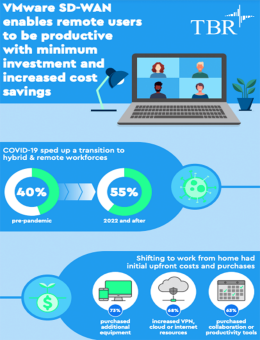Guest Post by Technology Business Research (TBR)
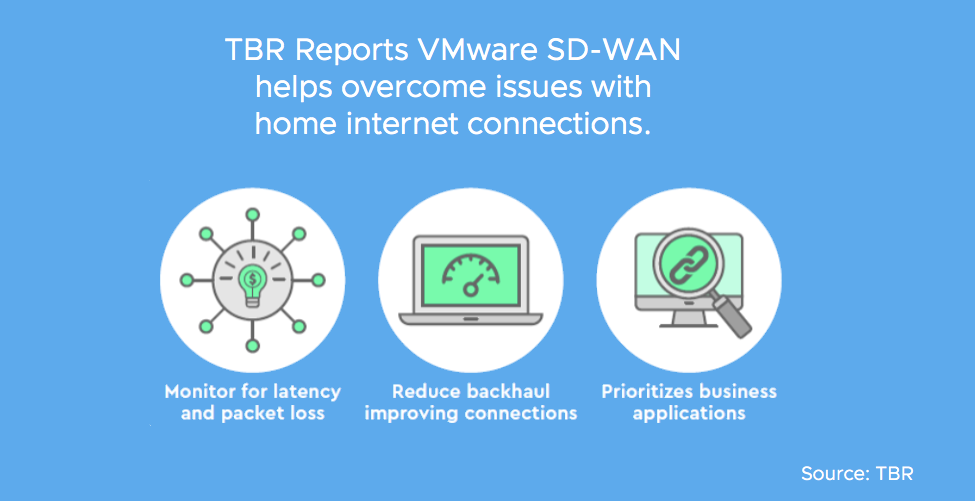
Post-pandemic workforces will be composed of significantly more remote workers
The COVID-19 pandemic has prompted enterprises to rethink many aspects of their businesses. Organizations were forced to adapt, and one of the biggest changes was a shift in workers’ locations from office buildings to their own homes.
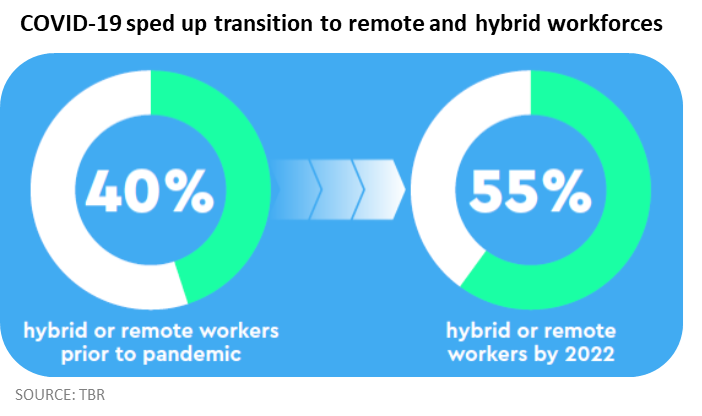
This shift is not a temporary change, but a sped-up transition to remote and hybrid workforces that is here to stay. For that reason, investments made today should consider this sustained shift toward remote work. Enterprises should focus on how they can overcome common challenges associated with remote workforces and invest for a future that leans more heavily on this workforce framework.
To better understand the new dynamics of a predominantly remote workforce, Technology Business Research (TBR) conducted an online survey, sponsored by VMware, of 150 enterprise staff responsible for spending and budgets related to remote workers. The goal was to determine how this shift from in-office roles to work-from-home roles has impacted the economics of a hybrid work environment. The survey focused on the expected shift in hybrid and remote roles as well as the costs, savings, challenges and benefits associated with enabling a remote workforce.

The research revealed that, in general, enterprises expect 55% of roles will continue to be remote a year from now, compared to only 40% pre-pandemic. This is especially true for knowledge-based industries such as financial services, where workers do not physically need to be present in a typical office location to accomplish their jobs.
Enterprises had initial upfront costs
While TBR’s research indicated that many enterprises had hybrid workers prior to the pandemic, the sudden shift to a larger percentage of remote workers initially resulted in increased costs for enterprises.
Many of these were upfront costs, such as acquiring hardware or software for workers to be productive working from their homes. These costs were often immediately offset by savings on utilities, office supplies and janitorial services. As a result, 77% of respondents indicated that net costs for remote workers were the same or lower than for in-office workers.
Remote workforces generate cost savings for enterprises
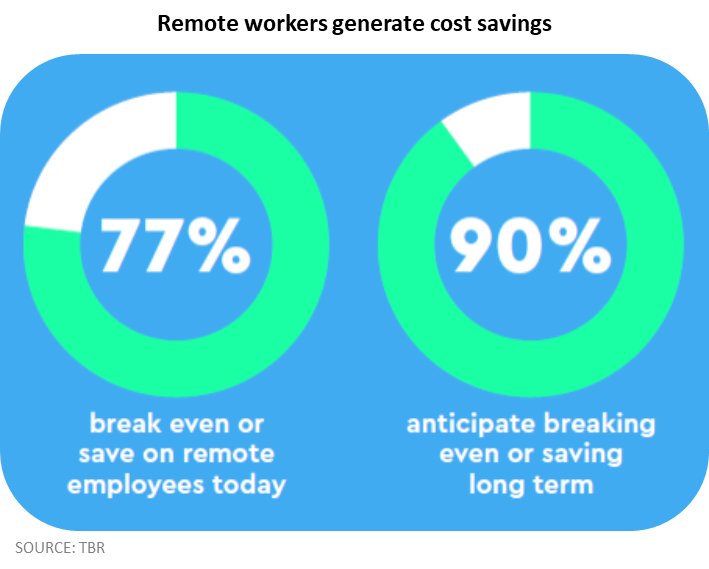
Of those enterprises saving money on remote workers, over 50% saved at least $200 per month on each remote worker. Even those that are not currently saving money on remote workers expect to do so over the next year. These respondents typically reported an increased expense of less than $100 per worker per month; however, most expect to break even or begin saving within a year as many enterprises still have an opportunity to realize savings from rent, downsizing or depreciation of assets.
In almost all of the enterprises surveyed, these longer-term cost savings are expected to result in further savings or will offset the cost of remote workers. This will help cement the trend toward remote workers as enterprises realize not only the cost savings but also the benefits, such as an expanded candidate pool for hiring and increased worker satisfaction and productivity, creating a win-win situation.
While remote work saves money, it also presents challenges around working from home offices: VMware SD-WAN can help
Remote work does not come without its own challenges. When employees are working from home, IT departments need to help them access resources and collaborate with colleagues efficiently. Enterprises should consider investments that can reduce this burden on IT departments while also providing an office-like work experience for remote workers.
Two challenge that enterprises commonly encounter are:
- Overcoming slow home Internet connections
- Enabling secure access to company data

These challenges can be mitigated with investments in networking technologies such as VMware SD-WAN™ (software-defined wide-area network), which enables enterprises to easily deploy and manage access to their networks while improving remote workers’ user experience and connections to resources. VMware SD-WAN also helps increase security while reducing the need for IT departments to manage other solutions such as VPNs. VMware SD-WAN ensures secure access with assured application performance, thereby helping workers stay as productive at home as they are in an office.
VMware SD-WAN helps overcome issues with home internet connections
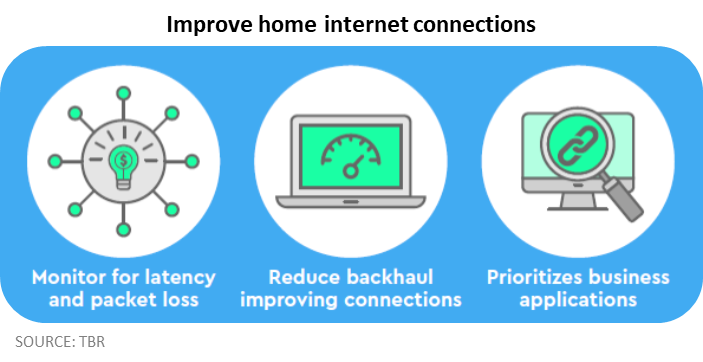
In offices, workers typically have access to business-grade internet connections. At home, workers often use public, consumer-grade home internet, often resulting in degraded experiences. Some performance degradation can be a result of packet loss, jitter or bandwidth congestion. VMware SD-WAN helps to optimize performance for workers by eliminating the need to backhaul traffic through the data center while providing a secure and reliable connection. This is especially important for SaaS and cloud-based applications, such as Salesforce and Microsoft 365, that workers tend to use on a daily basis.
Simplify and deploy VMware SD-WAN with ease
Another problem with home networks is network management. IT departments cannot support and manage every remote worker’s home network individually; however, VMware SD-WAN can help IT staff manage the connections of thousands of endpoints and provide a better experience for remote workers. VMware SD-WAN is also easy to deploy and can be set up by non-IT staff and configured remotely, making it an ideal solution for remote workers. Once installed, IT departments can prioritize bandwidth based on business policies and individual applications workers are running to help ensure quality of service (QoS).
VMware SD-WAN improves the experience for end users while simplifying management for IT departments
VMware SD-WAN also allows monitoring of links used by applications such as videoconferencing and voice over IP (VoIP). If packet loss or an impact on latency is detected, VMware SD-WAN will begin remediation using forward error correction, thus improving the quality of the connection, by reducing the incidence of blurry videos or dropped voice calls — further enhancing QoS. Additionally, VMware SD-WAN can be configured as a dual link with LTE allowing for load balancing, redundancy and increased bandwidth.
Enterprises must also maintain a high level of security while enabling remote workers to connect to company resources. VMware SD-WAN allows each endpoint to connect to the data center via any transport protocol — for example, multiprotocol label switching (MPLS), broadband internet, cable or LTE — allowing home offices to function very similarly to how branch locations typically would.
VMware SD-WAN not only solves problems today but also can help enterprises achieve their future goals
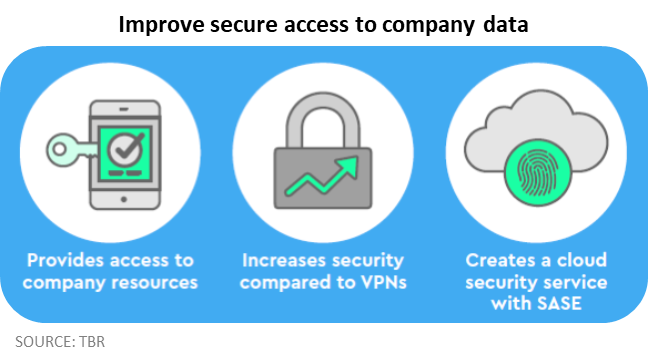
VMware SD-WAN provides enterprises with the opportunity to continue to improve their networking and security in the future while reducing the management burden on the IT department. An increase in the adoption of cloud has made it imperative to combine cloud networking and cloud security. This has introduced one of the latest trends around SASE (Secure Access Service Edge). SASE is a platform that combines VMware SD-WAN with cloud network security. IT departments can leverage SASE to set and deploy security policies by person, group or device, allowing for more effective management. This is especially important with a remote workforce where workers will need to be granted secure access to company resources regardless of where they are located or the network they connect through.
The conclusion: Enterprises with remote workforces should consider SD-WAN
A permanent shift to a hybrid work environment is almost certain going forward. As enterprises assess technologies for future investments, SD-WAN should be a strong consideration, especially for those with remote workforces. It can help enterprise IT departments overcome the common challenges associated with a remote workforce while also modernizing the organization’s networking capabilities. Enterprises that are already looking to increase cloud security, reduce IT complexity or deploy a hybrid cloud environment can benefit from an investment in SD-WAN as well. TBR expects adoption of SD-WAN to continue to grow as enterprises virtualize more of their IT environment and look for software-defined solutions that increase efficiency and productivity both in the office and working from home.
Learn more
- Download the TBR infographic and visualize how VMware SD-WAN helps companies overcome work-from-home challenges.
- Learn more about how VMware helps employees work remotely, including new pricing for VMware SD-WAN, on our Work from Anywhere web page.


